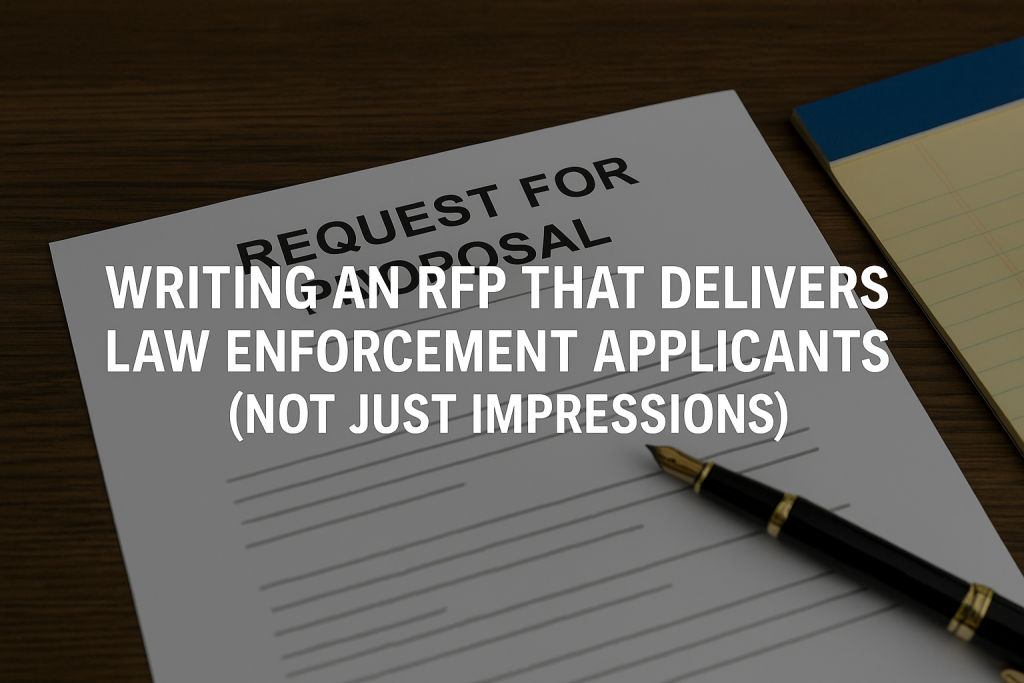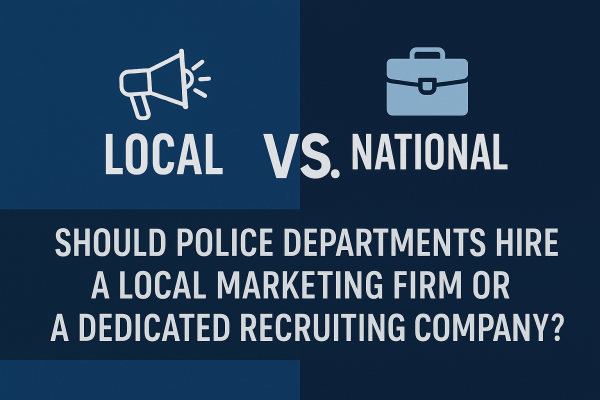Whe it comes to police hiring, the success of your recruiting campaign hinges not just on your budget, but how your RFP (Request for Proposal) is written.
Far too often, agencies unintentionally set themselves up for failure by writing RFPs that focus on marketing outputs like “impressions,” “reach,” or “web traffic” instead of the only metric that truly matters: applicants.
Impressions Don’t Equal Applications
Website visitors may sound impressive on a report, but they don’t move candidates through your hiring process. A million people seeing your ad doesn’t matter if no one applies. Marketing firms often respond to RFPs with strategies that prioritize visibility, because that’s what traditional marketing is built to do.
But law enforcement hiring is different. You don’t need more visibility; you need more qualified applicants. And the only way to get them is to build your RFP around outcome-based requirements, not ad impressions or branding strategies.
Write With Outcomes in Mind
A strong RFP clearly defines what success looks like. That starts by requiring bidders to:
-
Guarantee a specific number of candidates
-
Provide historical data or case studies to support their ability to deliver
-
Explain how they source and nurture candidates, not just attract web traffic
-
Describe the systems they use to convert interest into applications
When your RFP asks for candidates, not just advertising, you’re filtering out firms that can’t deliver on recruiting. This small shift in language forces bidders to bring a recruiting mindset, not a marketing pitch.
Ask the Right Questions
Your RFP should go beyond aesthetics and impressions. Ask:
-
How many applicants can you deliver per month?
-
What is your average cost per applicant?
-
How do you track candidates from interest to application?
-
Can you provide case studies from agencies that have had success?
The Risk of Getting It Wrong
Agencies across the country have spent millions on “recruitment marketing” contracts that resulted in little more than expensive video production and stagnant application numbers. Why? Because the RFP allowed it. When results aren’t tied to hires, vendors have no obligation to deliver them.
The Bottom Line
Your RFP is more than a procurement formality, it’s your blueprint for hiring success. Write it in a way that demands candidates and applicants, not impressions. The right partner will welcome that clarity because they measure success the same way you do: by hires.
Need help drafting or refining your recruitment RFP?
Download Our Guide Here or Schedule Your Free Consultation.



